Good quality beckons longevity, and such is the case you’ll want for yourself when we tell you just how long your shirt will last with our guide breakdown.
A shirt can last between 6 months – 1 year (26-52 weeks) before its age may begin to show in the form of loose threads, color differences, stains (particularly under the armpits), etc. The shirt may also lose its shape due to yarn unraveling – in this case, synthetic fiber clothing will last longer.
There can be a lot of causes that may contribute to your clothing’s utter demise, though there are countless ways to slow down (and speed up) this detrimental process. So read on below!

How many years does a t shirt last for?
A t-shirt with proper care and maintenance (along with infrequent wear) could last upwards of 5-15 years depending on the quality of the t-shirt firstly, followed by meticulous washing and drying methods.
It’s extremely hard to pin down how long a t-shirt could last, as there are many factors to account for. However, the three biggest factors are:
- The quality of t-shirt
- The maintenance and upkeep of the t shirt
- The frequency of the t shirt being worn
Log how long each fabric lasts for
Fabric type will play the biggest role obviously, as not all are created equal. So let’s see the average lifespan of various fabric types below.

As mentioned in my Ultimate Guide to Cotton article, natural fibers usually will last longer due to the way they are grown, resulting in quality integrity and longer and stronger fibers.
Though there are some out there who swear by synthetic fabrics like polyester over cotton, so if you’re unsure, then I recommend opting for a fabric blend t-shirt, as this will combine the strengths of both sides.
How long do sweaters last for?
As a sweater is usually worn over other garments like a t-shirt or shirt, this means that it can go longer before needing to be washed, and/or being eventually exposed to your bodily secretions.
The length of life for a sweater can range between 3-4 years (36-48 months) before eventual signs of degradation will begin to show (if the proper care measures are implemented.) Signs can include loose threading, undone stitching, and or stains (from sweat secretion or a third-party source.)

How long do clothes last on average?
A study on 5 countries conducted in Norway concluded that the average lifespan of garments is 5.2 years, with an additional 92% increase in longer lifespan (4.8 additional years gained) if garments are washed less often than after every 30 wears.
This means that washing infrequently overall is conducive to making your clothes last longer. Though for clothing other than jeans, it’d be hard to wear the same smelly t-shirt for 2 days straight, which is why you’re better off buying multiple pairs, guaranteeing your clothes last twice as long, to begin with.
Link to study referenced.
There are 3 large factors that will contribute to how fast your clothing’s deterioration rate will be. Quality of garments, price of garments (more often than not), and maintenance of clothing.

Top 3 factors contributing to faster clothes deterioration rate
Buying quality firstly is recommended and is what will keep your t-shirt looking devilishly handsome for years. Higher quality pieces will often last much longer due to superior materials used and construction.
Paying slightly more for quality (as mentioned in my previous Shirt price guide article here) I go over why investing in quality pieces is important, and how it actually saves you money in the long term.
Maintenance will contribute massively to how long your t-shirt can last. This is why it’s always important to heed the washing labels on your clothes. The dryer, however, is what has the potential to cause the most damage to your clothes if you overdry it enough.
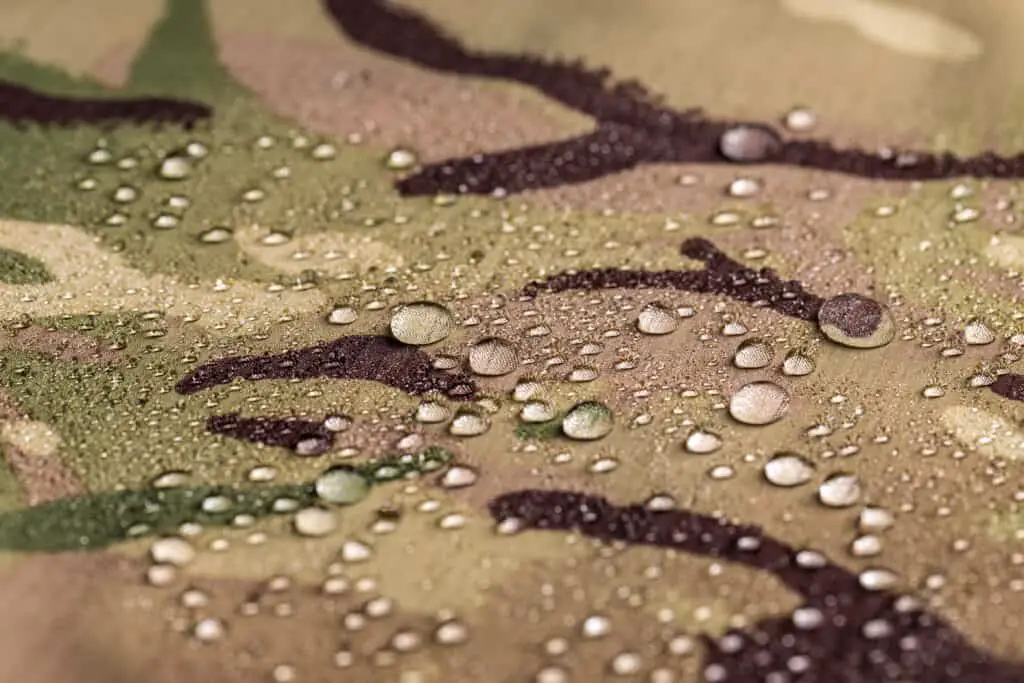
More on clothes/fabric maintenance:
Using the dryer frequently or “overdrying” is probably the single fastest way to ruin your clothing. Overdrying can cause fabric shrinkage and warp any elastic due to its rough tumbling action.
Therefore to prevent any accidents happening, dry all garments (minus line-dried delicates) at low temperatures, cold wash everything, and/or wash fabrics of similar wrought together (eg. no denim with t-shirts, etc.)
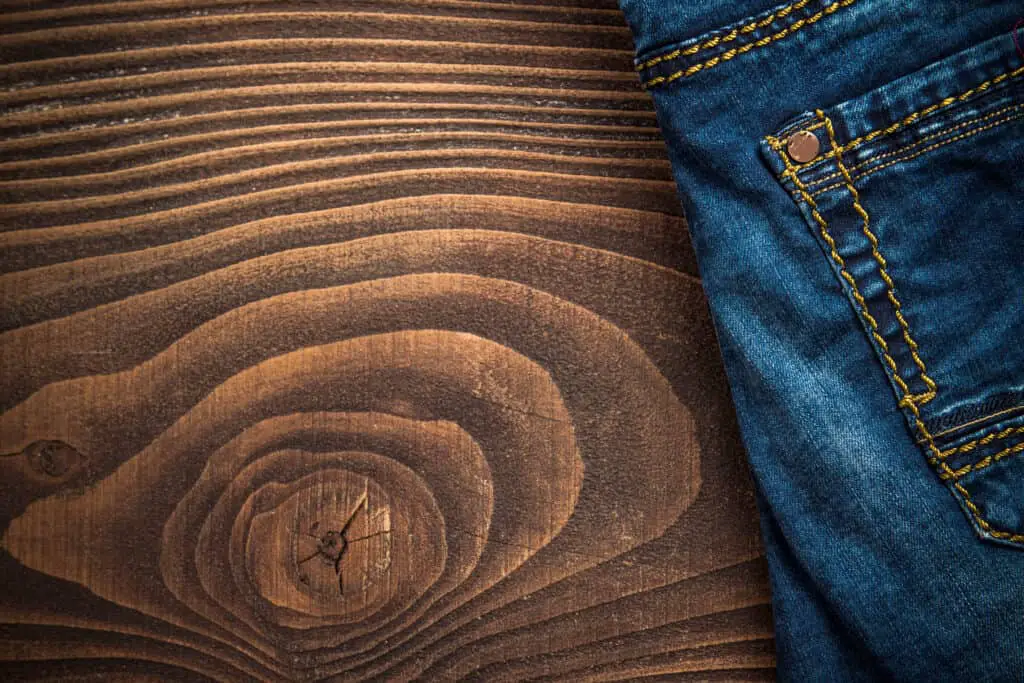
Heavier fabrics (like Denim) are more study, and will generally last longer with less care (good for clumsy individuals.)
Remember, washing 1 shirt a week for a year (52 weeks) = 52 wash cycles. That is a lot of washing. By getting 2 pairs of the same shirt/clothing you could reduce your amount of washing by half – think about that.
Style tip: Air dry your clothing for optimal efficiency.
This is (in part) why items like leather jackets can last for decades easily, as part of their handling process requires meticulous care and attention to detail (including only being dry cleaned by expert specialists and/or maintained by using conditioners and brushing.)
If you’d like to know more about how to clean your leather jacket then check out my in-depth article on the subject right here.
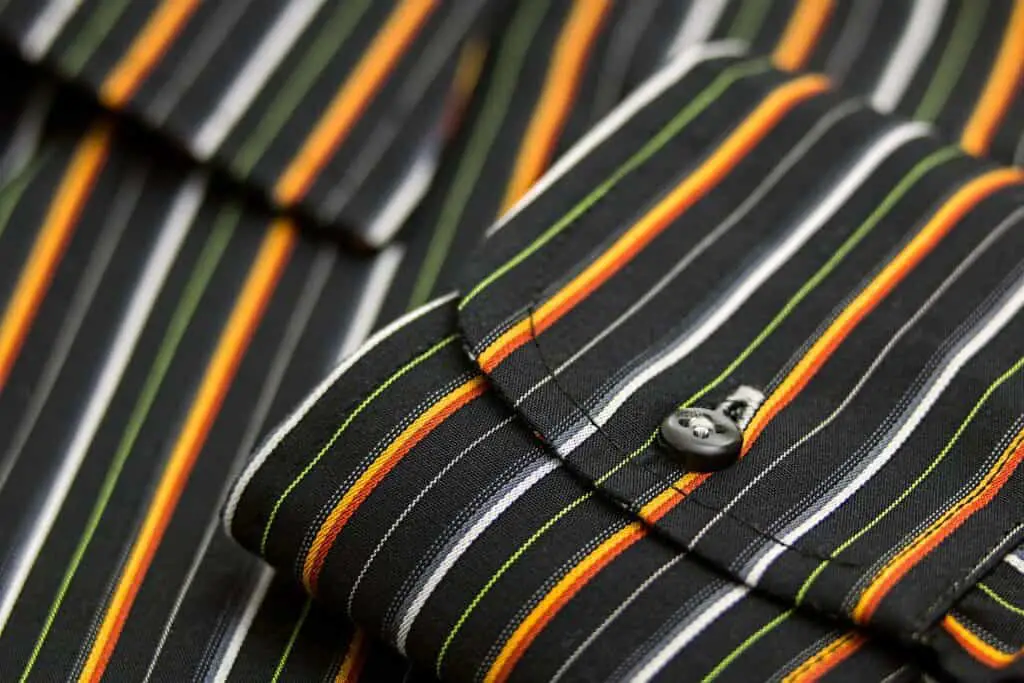
How long SHOULD you wear a shirt?
You want your clothing to last as long as possible, but you also don’t want to wear the same stinking set of garments if you can help, and so there is a fine line for how long you should wear clothing and shirts.
You should wear the same shirt for no more than one to two wears straight, as the wrought of shirt fabrics often will absorb the sweat and smell from your pores at an exponential rate compared to the sturdier material (like denim) that houses your lower extremities (like your legs.)
Buy a few pairs and remember to wipe
When it comes to shirts and t-shirts, I always say you’re better off buying a few pairs, as let’s face it – you’ll sweat and stink a lot more from your upper body than you will your lower.
If you must (for whatever reason) re-wear your shirt for longer periods of time nonstop, then at least try to rub the fabric near the underarm area gently with light soap to avoid furth developing any pit stains and smells.
Sweaters and jeans on the other hand are a lot more studied, and as a result, you can wear them more often before succumbing to the wash. For sweaters, I’d say 4-5 consecutive wears before washing (depending on how much you sweat.)
With jeans, however, it’s actually recommended you show some restraint and limit their washing to once every 6 weeks. This will ensure the fibers don’t break down and will preserve the actual fabric.
Style tip: If your jeans start stinking before the 6-week mark, put ’em in the freezer overnight to kill off the bacteria indefinitely.

How long do work shirts last
A good shirt (according to The Dry Cleaning and Laundry Insitute says that a good shirt should have a wear life of 35 to 50 washings, which is nearly a year of continuous daily washing and wearing, or two years if it’s done bi-weekly.
As mentioned, you’re better off getting a few pairs of work shirts, as this will not only allow you to keep your clothes around for longer but will also allow you to accessorize and formulate clothing combinations – win-win.
I recommend up to 5 work shirts to start with, followed by 1 new shirt added to your wardrobe every 2-4 weeks if you want to ensure diversity, however, if not, then 5 shirts should do the job just fine.
How many times should you wear a piece of clothing?
It can be tough to know how often your clothes need washing if they seem “decent’ on the outside, but there is a way to predict how much wear you can get out of a piece of clothing based on where they situate themselves on your body.
You can wear any piece of clothing around 5-6 times IF you know that it will never come into contact with any of your bodily secretions. This means jackets, jeans, and possibly sweaters can be worn 5-6 times before washing. Shirts and t-shirts should be washed after every 1-2 wears.

This is the main reason why jeans and jackets can last as long as they do without stinking up the place – unlike a t-shirt. Due to odors and your body’s natural release fluids due to the environment, this makes it easy to predict in advance how often you will need to wash a piece of clothing.
Jeans, jackets, etc. rarely are subjected to the same stinky liquids that your shirts and t-shirts come into contact with. Items like jeans sit on your legs which don’t have as many porous “hot zones” (like your armpits and back), therefore the only thing they’ll collect is gradual dust from natural weather exposure.
If you happen to be looking for a really cool material that absorbs moisture and keeps you cool in hot weather and insulates heat in cool weather, then you gotta check out my article fabric merino wool right here.
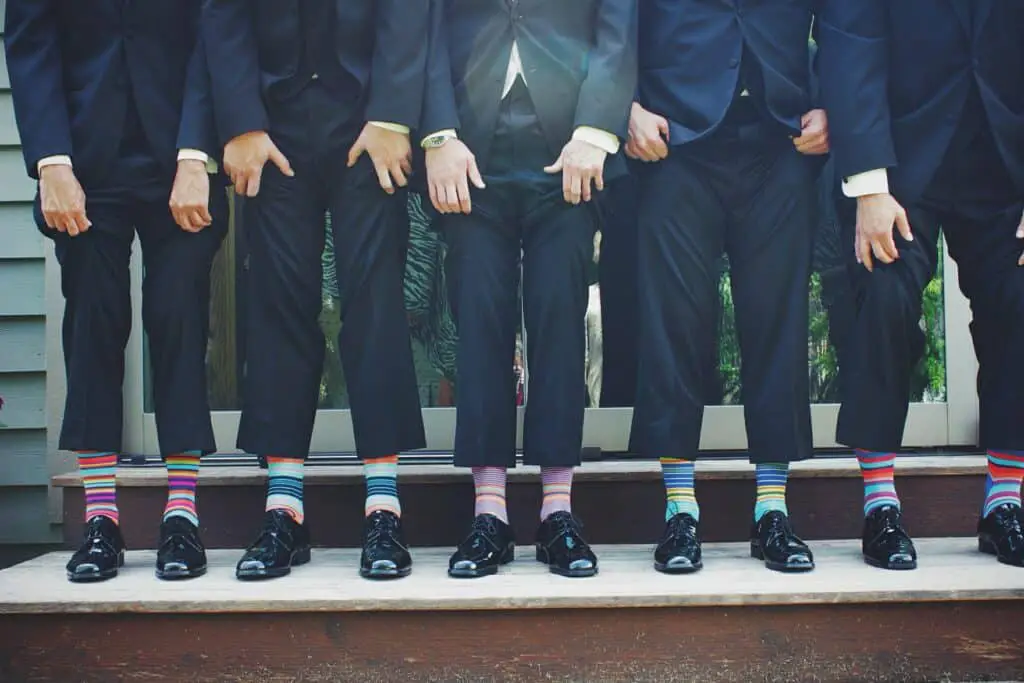
How many clothes does the average person have?
It can be a pain to see items in your wardrobe go to waste if you simply have no need to ever wear certain things, this is why it’s important to spend money on investment pieces, clothes that you’ll actually wear, but with this being said, how many clothes does the average guy have?
The average amount of clothes that a man should have is around 40 wardrobe items. This amounts to what I think serves as a good minimalist foundation without being too excessive (though no problem if you’d prefer excessive.) This includes 8-12 dress shirts, 8-12 t-shirts 10 or fewer pairs of shoes, 4-5 jeans, 4-5 sweaters, 4-5 jackets.
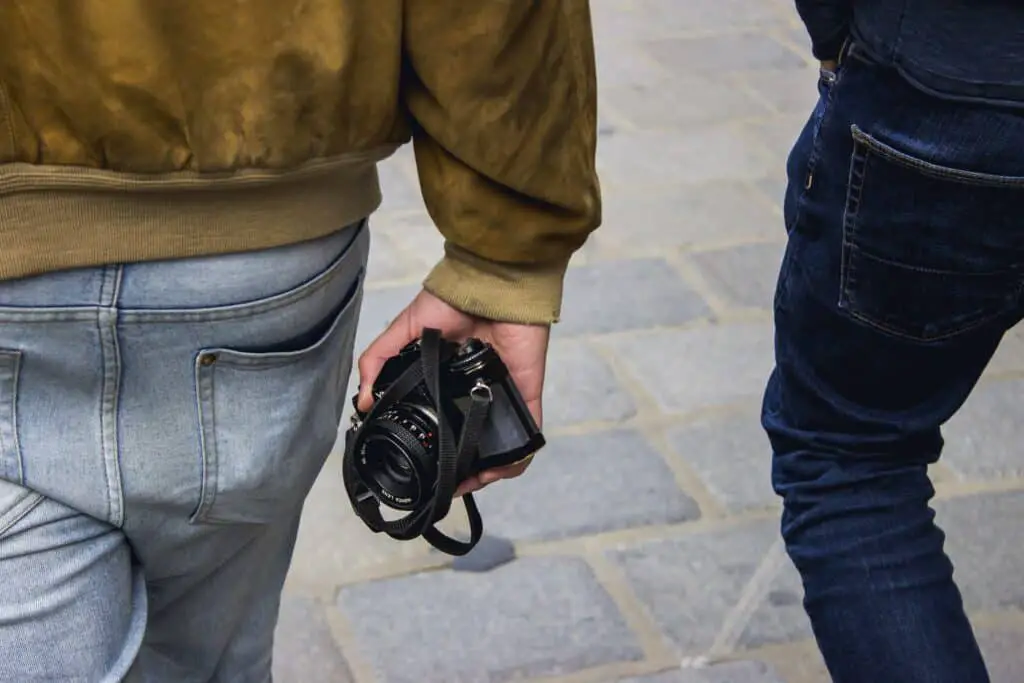
Take me for example, I love jackets, therefore I personally own over 20 jackets in differing styles, types, and lengths – there’s no fixed rule as to how many clothes you should have, just recommendations. Though the above recommendation is what I think is more than enough to start with (with a little extra for good measure), feel free to add or subtract what you wish.
With t-shirts and shirts, in particular, having let’s say 10 pairs ensure that each shirt/t-shirt will only need to be washed between 2.6-5.2 times per year (if you have 10 shirts and 10 t-shirts.) If the average work shirt can handle between 35-50 washings before beginning to deteriorate, then that means your shirts should last you around 6.7 years (minimum.)
The borderline pedantic equation above doesn’t mean much, just felt like giving you a unique and fun perspective.
When should you throw out shirts
You should throw out your shirts first and foremost if you haven’t worn them in 6 months, and/or whenever you see the beginnings of what looks to be sweat (or other) types of stains, absurd amounts of loose threading, and if the garment does not fit anymore.
This is why I rave about minimalist fashion and is such a concept I myself have been trying to get into a lot more as of late. No one likes wasting money, and worse is when you find that unused shirt in your overstuffed closet that you haven’t worn in ages.
By incorporating a more minimalistic mindset when it comes to your wardrobe, will help you save money, time, and stress by limiting your purchases, thereby forcing you to make the most out of what you truly love wearing, without all the nonsensical excess. This will also allow you to identify stains and/or imperfections faster, as they’ll be less clutter to distract you.
If you’re also curious about minimalistic fashion, here’s a link to a wonderful piece on the very subject by Ape to Gentlemen.com (link to their official site.)
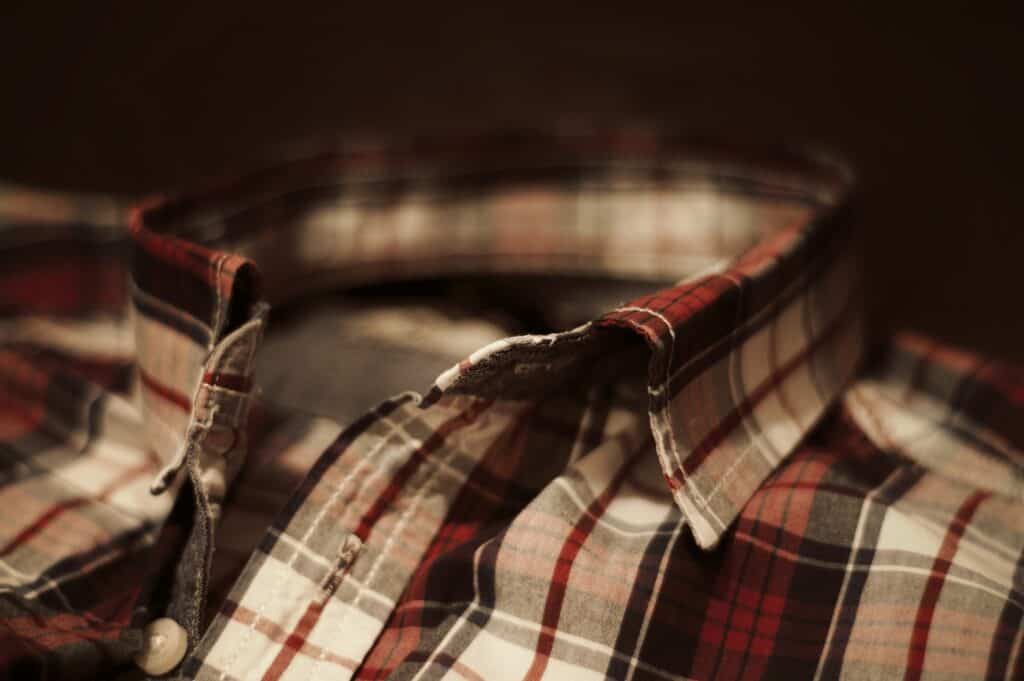
Does fabric softener help clothes last longer?
Certain fabric softeners will help your clothes last longer, such as ones made for sensitive skin. These certain types of softener (as a byproduct) are made without any harsh chemicals, perfumes, dyes, and harsh detergents and can help reduce friction and static cling, helping your clothes not be as prone to wear and tear.
This is highly dependant on which fabric softener you use, and if the type of clothing you use it on allows for such softeners to be used – as some items like performance clothing do not permit the use of such softeners.
If the label allows it, using softeners for sensitive skin could prove to help your clothes last as they are by design made to be hypoallergenic, odor, and colorless, free of such harmful chemicals like benzyl acetate, and can aid in ensuring the fibers of your clothing remain static and cling-free, overtime helping your clothes last longer.
My Recommended List of Hypoallergenic Laundry Softener for Clothes
Mrs. Meyer's Clean Day Fabric Softener, Lavender | |
Snuggle Liquid Fabric Softener, Dye Free for Sensitive Skin | |
Friendsheep Organic Eco Wool Dryer Balls | |
Purecosheet - Reusable Dryer Sheets | |
HEX Performance Laundry Packs | |
Downy Ultra Plus Free & Gentle Liquid Fabric Conditioner |
“If you’re going to pull it, you do it before you start.”
Snabba Cash (Netflix)
Lest you want the brick & mortar cashier to know of your misguided intentions with yet another shirt that’ll have you coming back to them in 1 month – plan ahead and plan with vigor (from beforehand) as to how you’ll maintain your wardrobe bounty from here on out.
Buy in pairs, buy with a plan, and please…buy what you’ll actually use.
Stay Rogue.

